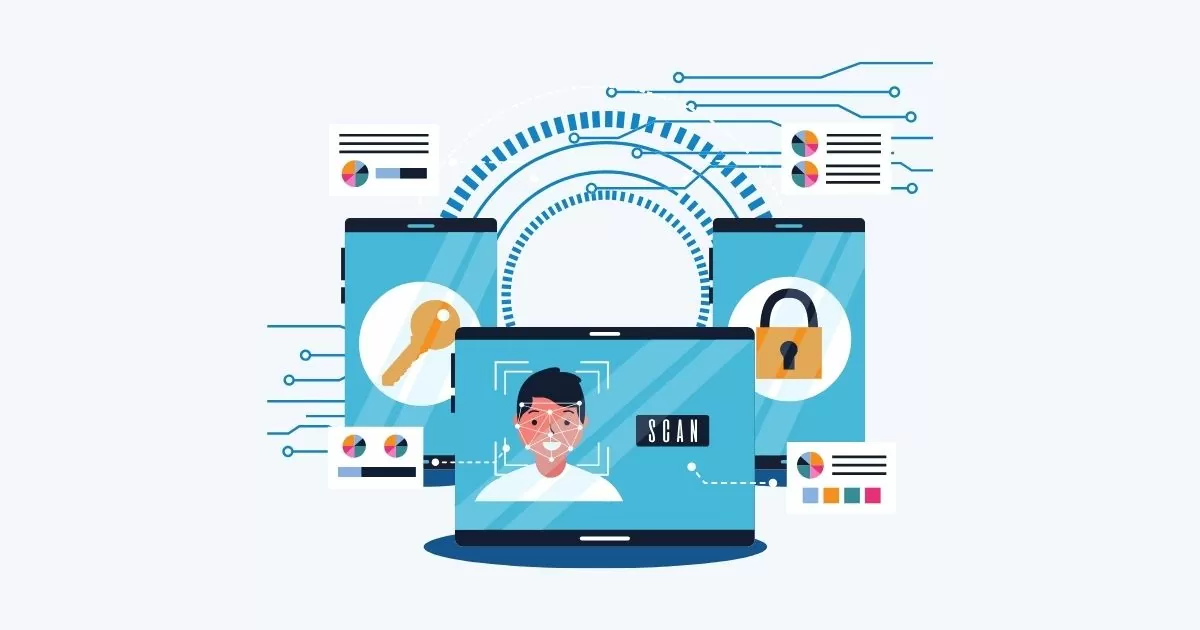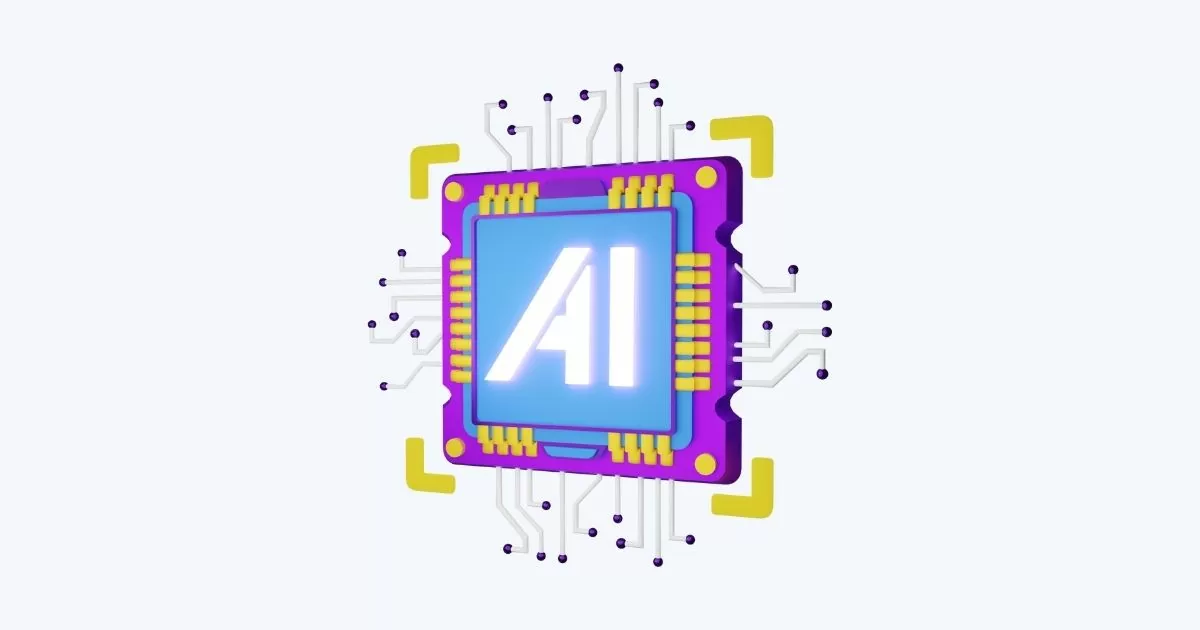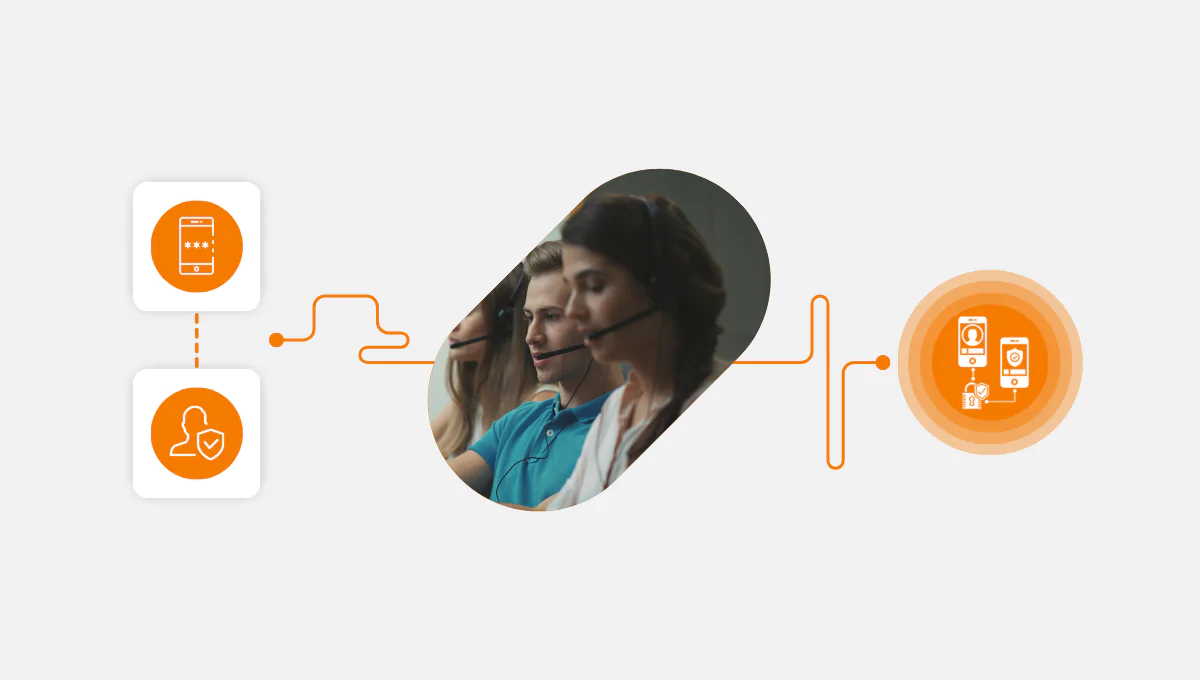Buckle up for a journey into the extraordinary world of voice biometrics, where the human voice becomes a key to safeguarding precious customer data. In this exploration, we’ll unravel the mysterious evolution of voice biometrics, highlighting the critical milestones that have paved its path.
We’ll also venture into the future, where state-of-the-art innovations promise to redefine the very essence of data security.
Join us on this distinctive odyssey where technology and security intertwine in a symphony of sophistication.
1. Why is Voice Biometrics Vital for Data Security?
Voice biometrics stands as a fortress for data security by offering a unique and dynamic layer of protection. Unlike passwords or PINs, each person’s voice is inherently distinct, making it a robust tool for authentication.
Voice biometrics utilizes the nuances of speech, such as tone, pitch, and rhythm, ensuring that even in the hands of an impersonator, access remains elusive.
Continuous innovation is the lifeblood of voice biometrics, as cyber threats constantly evolve. In this ever-shifting landscape, staying ahead of malicious actors requires a commitment to advancing technology.
By consistently refining voice biometrics algorithms, it can enhance its accuracy and reliability, making it a stalwart guardian of sensitive customer data.
What makes voice biometrics a crucial component of data security?
Voice biometrics is pivotal due to its inherent uniqueness, each person’s voice is like a vocal fingerprint, providing robust authentication.
It guards against impersonation and fraud, offering a higher level of protection than traditional methods. The dynamic nature of voice biometrics ensures ongoing security, as innovative algorithms adapt to evolving threats.
Its precision in recognizing vocal nuances adds a sophisticated layer of defense to safeguard customer data.
Now, advancements in signal processing, machine learning, and artificial intelligence have propelled voice biometrics into the digital age. Today, it’s capable of not only recognizing the speaker but also discerning between live voices and recorded ones, fortifying its role in data security.
Why is ongoing innovation essential in voice biometrics technology?
Ongoing innovation in voice biometrics is essential in the realm of data security due to the ever-evolving landscape of cyber threats. In an environment where malicious actors are perpetually developing new strategies and technologies to breach security measures, the need for continuous innovation becomes imperative.
Voice biometrics, as a cutting-edge security tool, thrives on innovation as it ensures the technology remains at the forefront of safeguarding customer data. By consistently refining and upgrading voice biometrics algorithms, not only enhancing their accuracy and effectiveness but also adapting to emerging security challenges.
Moreover, innovation allows voice biometrics to address the growing complexities in the digital age, such as the increasing prevalence of deepfake technology and voice synthesis. These innovations ensure that voice biometrics remains not just a reliable security measure but also a sophisticated and adaptable one.
Consequently, it’s equipped to withstand the dynamic and evolving nature of cyber threats, making it an indispensable component of modern data security.
2. How Has Voice Biometrics Evolved Over Time?
Voice biometrics has undergone a fascinating metamorphosis since its inception. Its evolution spans several decades, marked by remarkable milestones that have shaped its contemporary form.
What are the historical milestones in the development of voice biometrics?
- The 1970s witnessed the nascent exploration of voice as an authentication method.
Nevertheless, the era was fraught with technological limitations that hindered the development of practical solutions.
- Fast forward to the 1980s, the first voice recognition systems made their debut.
These systems relied on rudimentary signal-processing techniques to identify users’ voice patterns, yet their high error rates posed considerable challenges.
- The 1990s marked a turning point as voice recognition systems significantly improved in accuracy, thanks to advancements in signal-processing techniques.
Furthermore, the incorporation of machine learning techniques to train voice algorithms further refined their capabilities.
- By the 2000s, expert companies spearheaded the development of voice biometrics systems that harnessed a myriad of voice features, such as intonation, rhythm, and speed. This holistic approach led to enhanced recognition accuracy.
Additionally, these systems delved into emotion analysis techniques, bolstering their capacity to detect fraudulent activities.
- The 2010s brought about a paradigm shift as companies developed real-time voice biometrics systems, rendering them ideal for mobile and online security applications.
This transformation not only improved security but also enhanced the user experience, representing a significant leap in the evolution of voice biometrics technology.
This brief history highlights the remarkable journey of voice biometrics from its conceptual roots to its advanced and sophisticated form today.
What key advancements have led to the current capabilities of voice biometrics?
Key advancements that have shaped the current capabilities of voice biometrics include:
AI Integration
Cutting-edge voice biometrics leverages deep learning and AI to enhance its capabilities. State-of-the-art algorithms can now detect spoofing attempts by analyzing vocal biomarkers like respiration patterns, helping thwart sophisticated impersonation attacks.
AI has become the driving force behind the future of voice biometrics. They enable the system to
- Adapt and improve continuously
- Honing its accuracy
- Resilience against fraud
AI-driven enhancements have made voice biometrics more accurate and robust, further bolstering its capabilities in data security.
Thanks to AI, voice biometrics is no longer just a technology, it’s a dynamic shield, ready to evolve with the ever-changing threat landscape. Thus, it ensures customer data remains safely out of reach for cybercriminals.
Machine Learning
- One of its key contributions is the ability to facilitate adaptive learning within voice biometrics systems. Machine Learning algorithms empower these systems to continuously adapt and improve their recognition and verification processes.
They can learn from a diverse range of voices, accents, and environmental conditions, which refines their ability to identify individuals based on their unique vocal characteristics.
- ML has significantly improved the accuracy of voice biometrics. By analyzing extensive datasets and identifying patterns, ML algorithms can discern even subtle differences in vocal features.
This precision makes the recognition process more accurate and robust, thereby enhancing the overall effectiveness of voice biometrics.
- These algorithms have the capacity to detect live voices and differentiate them from recorded or synthetic ones. This capability adds an extra layer of security, making it increasingly difficult for impersonation attempts to succeed.
- Efficiency and speed are further benefits of machine learning in voice biometrics. These algorithms process and analyze voice data swiftly, enabling real-time authentication.
This efficiency not only enhances security but also contributes to a seamless and user-friendly experience.
3. What Are the Latest Voice Recognition Innovations?
What are the cutting-edge voice recognition algorithms in use today?
Modern voice recognition algorithms excel in identifying individuals based on their vocal characteristics. These algorithms leverage state-of-the-art technology to provide a significantly higher level of accuracy and security in voice biometrics.
Deep Learning
One of the defining features of these advanced algorithms is their integration of deep learning techniques, such as:
- Convolutional neural networks (CNNs)
- recurrent neural networks (RNNs)
Deep learning enables the system to analyze a broader range of vocal features, making it exceptionally precise in recognizing unique characteristics.
Vocal Biomarker Analysis
Moreover, cutting-edge algorithms delve deep into vocal biomarker analysis. They go beyond basic voice analysis to examine intricate vocal cues, such as:
- Respiration patterns
- Speech nuances
- Emotional expressions
This comprehensive analysis adds an additional layer of security, making it exceedingly challenging for fraudsters to mimic a person’s distinct vocal traits.
Real-time Processing
Real-time processing is rendering algorithms suitable for applications demanding instantaneous authentication, such as online transactions or access control.
This real-time capability not only enhances the user experience but also upholds security standards.
In summary, cutting-edge voice recognition algorithms combine advanced tech for high accuracy and adapt to evolving threats.
How is machine learning and AI shaping the future of voice biometrics?
Machine learning and AI are fundamentally reshaping the future of voice biometrics. These technologies, by continually learning from diverse voices and adapting to evolving threats, are enhancing the accuracy and security of voice recognition systems.
This not only fortifies data protection but also enables real-time processing for seamless user experiences. As voice biometrics evolves, machine learning and AI ensure it remains robust and reliable for data security.
What trends are expected to shape the future of voice biometrics?
Looking ahead, emerging trends include integration with voice assistants, multimodal biometrics, and decentralized authentication.
These trends are set to redefine how we interact with data security, not only fortifying it but also delivering a seamless and user-friendly experience.
The voice biometrics market is expected to grow at a 19.1% CAGR, reaching US$ 4985.8 million by 2030 from US$ 1467.4 million in 2022. As technology continues to evolve, voice biometrics remains at the forefront, securing customer data with sophistication and convenience.
To sum up
In a world where data security is paramount, voice biometrics emerges as a formidable ally. The capability to scrutinize vocal nuances and detect even the most sophisticated spoofing attempts showcases its remarkable evolution.
As we gaze into the future, it’s clear that machine learning and artificial intelligence will continue to shape the landscape of voice biometrics, refining its accuracy and resilience against evolving threats.
To navigate this path and harness the full potential of voice biometrics, consider partnering with a robust solution like Call Center Studio. Their expertise in advanced call center technology ensures not only enhanced data security but also a seamless and efficient customer experience.
Take the next step in safeguarding your customer data. Explore the possibilities with Call Center Studio. Your journey towards data security excellence begins now.






